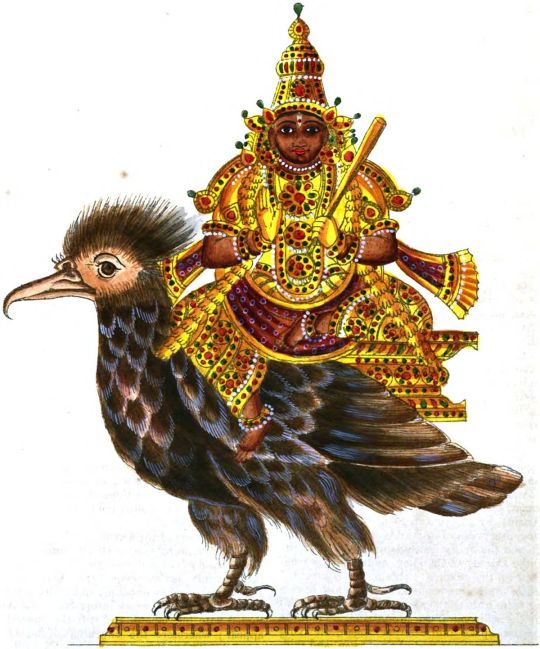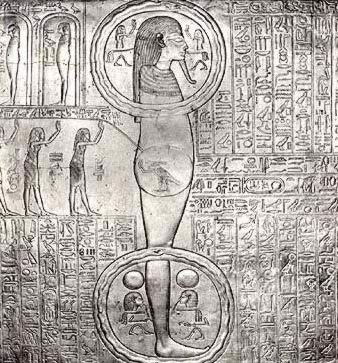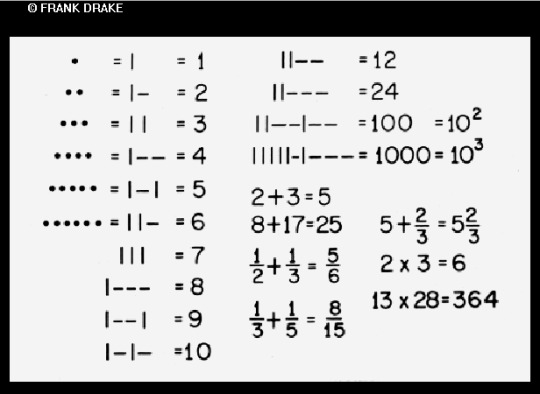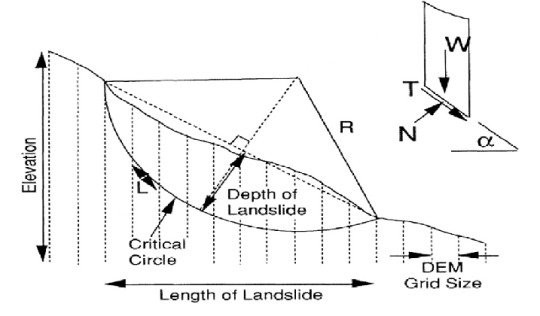#solar calculator india
Text

Solar Panel Calculator
Calculate your electricity bills with MYSUN solar calculator, solar rooftop calculator and install the solar panels based on the solar power potential. The MYSUN Solar Calculator is an online advanced tool developed by the solar experts at MYSUN to help you quickly determine the potential savings that you can make when you go solar.
#solar calculator#solar calculator india#solar panel calculator#solar rooftop calculator#solar power calculator
1 note
·
View note
Text
Solar Panel Calculator: Understanding its Functions and Benefits
Solar power stands out as a frontrunner for a cleaner and more environmentally friendly future in the global shift towards sustainable energy. Technological progress and increased awareness of environmental advantages have prompted numerous industries to explore adopting solar panels. Yet, before making the decision, it is essential to grasp the associated costs and advantages. This is where the solar calculator proves invaluable, as a crucial tool for individuals and businesses alike to evaluate the viability and potential cost savings of solar energy systems.
What is a Solar Panel Calculator?
A Solar Panel Calculator, alternatively recognised as a solar panel cost calculator, solar energy calculator, or solar PV calculator, is an online utility intended to assist individuals and entities in appraising the expenditure, prospective savings, and energy generation associated with a solar panel system. By considering factors such as geographic location, energy consumption profiles, panel efficiency, and applicable financial incentives, this tool furnishes a meticulous evaluation tailored to the user’s distinctive needs. With Goldi Solar as your doorway to sustainable energy solutions, empower your future. Acknowledged as India’s Premier manufacturer, we provide you with state-of-the-art technology and unparalleled excellence.
Understanding its Functionality
Understanding how the solar calculator functions is straightforward: users input their location, energy needs, and pertinent details to receive an estimate outlining the size, cost, and potential savings associated with a solar panel system. Now, let’s delve into a solar calculator’s essential features and advantages.
Evaluating Solar Viability
Upon entering your location, the solar panel calculator leverages satellite data, local weather patterns, and specific solar irradiance levels. It incorporates variables such as average sunlight hours, potential shading from nearby structures, and the regional climate to evaluate the solar energy potential for your specific area precisely.

Determining Size and Cost Projections
Considering your industry’s energy consumption and the solar potential at your location, the calculator computes the number of solar panels necessary to fulfil your energy requirements. Furthermore, it approximates the system’s overall cost, encompassing equipment, installation, and maintenance expenses. This valuable information assists in the strategic planning of your budget.
Financial Gains
A key incentive for embracing solar energy lies in its long-term potential for cost savings. The solar calculator considers factors such as your existing electricity rates, available financial incentives like tax credits or rebates, and the anticipated energy output of the solar panel system. Using this data computes the potential savings on your utility expenses, clarifying the financial advantages of transitioning to solar. Additionally, it aids in determining the payback period and return on investment (ROI) for your solar panel system.
Tailoring and Contrasting
Solar calculators empower users to tailor parameters, including panel efficiency, system size, and financing alternatives. This functionality enables the comparison of diverse scenarios, facilitating informed decisions based on budget constraints, energy objectives, and available options. The ability to explore different combinations assists in identifying the most fitting solar panel system for specific requirements. Goldi Solar is the best option for solar panels in India to light up your world. Choose the greatest, as we are regarded as India’s Best Solar Panel Manufacturer. Decide to switch to sustainable energy. With Goldi Solar, begin your solar journey right now.
Environmental Implications
Beyond financial considerations, solar calculators often assess the environmental impact associated with your solar panel system. By quantifying the reduction in carbon emissions, the calculator illuminates the positive contribution toward mitigating climate change. This data lets you discern the broader environmental advantages of transitioning to solar energy.
How can Solar Panel Calculators Help Different Stakeholders?
Solar Panel Calculators play a crucial role in empowering various stakeholders to pursue a sustainable future through the adoption of solar energy. Whether you are an individual homeowner, a business owner, a contractor, or an environmental advocate, these calculators offer tailored insights into the costs, savings, and environmental benefits associated with solar panel installations. Here’s how solar calculators benefit different stakeholders:
Businesses
Solar energy represents a significant opportunity for businesses to cut operating costs and showcase their commitment to sustainability. Solar calculators assist enterprises to in estimating the financial viability of solar panel installations, including potential electricity bill savings, available tax incentives, and project ROI. Companies can make informed decisions aligned with their financial and sustainability goals by evaluating different scenarios and financing options.
Contractors and Installers
Solar contractors and installers utilise solar PV energy calculators as valuable tools to engage potential customers. These calculators enable contractors to generate precise project estimates, showcasing financial benefits and expected energy production. This transparency builds trust, enhances customer satisfaction, and contributes to successful project outcomes.
Environmental Organizations and Advocates
Environmental organisations and advocates play a vital role in promoting renewable energy adoption. Solar calculators serve as educational tools to raise awareness about the benefits of solar energy. By sharing these calculators, environmental advocates empower individuals and businesses to explore both solar power’s financial and ecological advantages, visualise potential carbon emission reductions, and inspire action toward a sustainable future.
Empowering Businesses and Industries
An efficient solar energy solution assists industries and businesses in effectively harnessing solar power. Through state-of-the-art technologies and industry best practices, it conducts thorough assessments to determine a business’s solar potential, considering factors such as energy consumption, available space, and financial goals. This support enables industries to reduce reliance on traditional energy sources, lower operating costs, and showcase a commitment to environmental sustainability.
In conclusion, solar calculators are instrumental tools that bring solar energy within reach for individuals and businesses. By providing precise estimates of costs, savings, and energy production, these calculators empower users to make informed decisions about solar panel installations. Embracing solar energy through the assistance of these calculators allows stakeholders to make sustainable choices that benefit their finances and the planet.
Read More Here: https://goldisolar.com/solar-panel-calculator-understanding-its-functions-and-benefits/
#Solar Panel Calculator#solar system#solar panel#solar panel manufacturer#solar panels#solar panel manufacturers in india
0 notes
Text
How Do i Calculate The Thermal Efficiency of The Solar Water Heater
How Do i Calculate The Thermal Efficiency of The Solar Water Heater
To calculate the thermal efficiency of a solar water heater, you can use the Solar Energy Factor (SEF) and Solar Fraction (SF). The SEF is determined by dividing the energy delivered by the solar water heater system by the electrical or gas energy input into the system. A higher SEF indicates greater energy efficiency. The SF, on the other hand, represents the proportion of the total hot water energy provided by the solar system. The formula to calculate SF is: SF = (Energy delivered by the solar system) / (Total energy used for water heating). A higher SF signifies a larger contribution of solar energy to the heating process, indicating better efficiency.
Calculating the Thermal Efficiency of Solar Water Heaters A Comprehensive Guide by Jupiter Solar
Solar water heaters have become increasingly popular as an eco-friendly and cost-effective solution for meeting our hot water needs. Understanding the thermal efficiency of these systems is essential for both homeowners and businesses looking to harness the power of the sun to reduce energy bills and environmental impact. In this comprehensive guide brought to you by Jupiter Solar, we will delve into the intricacies of calculating the thermal efficiency of a solar water heater.Buy a best solar water heater from Jupiter Solar, www.jupitersolars.in .
What Is Thermal Efficiency?
Thermal efficiency is a crucial metric when it comes to evaluating the performance of a solar water heating system. It quantifies how effectively the system converts sunlight into usable hot water. A higher thermal efficiency means that a greater percentage of the sun's energy is being utilized, resulting in more cost savings and reduced dependence on conventional energy sources.
The Solar Energy Factor (SEF)
To calculate the thermal efficiency of your solar water heater, you can start by determining the Solar Energy Factor (SEF). SEF is a key indicator of a system's efficiency and is widely used in the solar energy industry.

SEF = Energy Delivered by the Solar System / Electrical or Gas Energy Input
In simpler terms, SEF measures how much energy your solar water heater provides compared to the energy it consumes. A higher SEF indicates a more efficient system. To calculate the SEF, follow these steps:
Measure Energy Delivered: This is the total amount of hot water produced by your solar system over a specific period. You can typically find this information in your system's documentation.
Measure Energy Input: Calculate the amount of electrical or gas energy used by your backup heating system during the same period.
Plug the Values: Insert these values into the SEF formula. The resulting SEF will give you a clear picture of your solar water heater's performance.
The Solar Fraction (SF)
In addition to SEF, you can also use the Solar Fraction (SF) to assess your solar water heater's efficiency. SF represents the proportion of your hot water needs that are met by the solar system. A higher SF indicates a system that relies less on conventional energy sources.
SF = Energy Delivered by the Solar System / Total Energy Used for Water Heating
To calculate the SF, follow these steps:
Measure Energy Delivered: As mentioned earlier, this is the total hot water production from your solar system.
Total Energy Used: This includes the energy supplied by both the solar system and any backup heating source over the same period.
Calculate SF: Insert the values into the SF formula to determine the solar fraction.
Factors Affecting Efficiency
Several factors can influence the thermal efficiency of your solar water heater:
Solar Collector Type: The type and design of solar collectors used in your system can significantly impact efficiency. High-quality collectors with advanced technology tend to perform better.
Weather Conditions: Weather plays a crucial role in solar water heater efficiency. Cloudy days and reduced sunlight can temporarily decrease the system's performance.
System Maintenance: Regular maintenance ensures that your system operates at peak efficiency. Dust, dirt, and debris can reduce the effectiveness of solar collectors.
Location and Orientation: The geographic location of your solar water heater and its orientation relative to the sun affect its ability to capture solar energy efficiently.
By considering these factors, you can optimize your solar water heater's thermal efficiency, leading to greater energy savings and a smaller carbon footprint.
Conclusion
Calculating the thermal efficiency of your solar water heater is a fundamental step in assessing its performance and making informed decisions about energy usage. Understanding metrics like the Solar Energy Factor (SEF) and Solar Fraction (SF) empowers you to harness the full potential of your solar water heating system. Jupiter Solar is committed to providing you with the knowledge and tools you need to make the most of renewable energy solutions.
As you embark on your journey to a more sustainable and energy-efficient future, remember that Jupiter Solar is here to support you every step of the way. If you have any questions or need assistance with your solar water heater, please don't hesitate to contact us(https://www.jupitersolars.in) for expert guidance. Together, we can create a greener and more sustainable tomorrow.
#Factors Affecting Efficiency#solar#solar power#solar water heater#solar energy#bangalore#india#solar water heaters#bengaluru#solar water heating#solar heater#water#solar system#Solar Collector Type#Weather Conditions#The Solar Fraction (SF)#What Is Thermal Efficiency#Calculating the Thermal Efficiency of Solar Water Heaters#how#How Do i Calculate The Thermal Efficiency of The Solar Water Heater#thermal#thermal efficiency#Solar Energy Factor#heaters#solar heaters
1 note
·
View note
Text
#solar panel manufacturers in india#solar panel price#solar panel installation#solar calculator#solar photovoltaic cell#top 10 solar panel company in india#on grid solar#photovoltaic solar system#best solar panels in india
1 note
·
View note
Text
Scientists have developed a new solar-powered system to convert saltwater into fresh drinking water which they say could help reduce dangerous the risk of waterborne diseases like cholera.
Via tests in rural communities, they showed that the process is more than 20% cheaper than traditional methods and can be deployed in rural locations around the globe.
Building on existing processes that convert saline groundwater to freshwater, the researchers from King’s College London, in collaboration with MIT and the Helmholtz Institute for Renewable Energy Systems, created a new system that produced consistent levels of water using solar power, and reported it in a paper published recently in Nature Water.
It works through a process called electrodialysis which separates the salt using a set of specialized membranes that channel salt ions into a stream of brine, leaving the water fresh and drinkable. By flexibly adjusting the voltage and the rate at which salt water flowed through the system, the researchers developed a system that adjusts to variable sunshine while not compromising on the amount of fresh drinking water produced.
Using data first gathered in the village of Chelleru near Hyderabad in India, and then recreating these conditions of the village in New Mexico, the team successfully converted up to 10 cubic meters, or several bathtubs worth of fresh drinking water. This was enough for 3,000 people a day with the process continuing to run regardless of variable solar power caused by cloud coverage and rain.
[Note: Not sure what metric they're using to calculate daily water needs here. Presumably this is drinking water only.]
Dr. Wei He from the Department of Engineering at King’s College London believes the new technology could bring massive benefits to rural communities, not only increasing the supply of drinking water but also bringing health benefits.
“By offering a cheap, eco-friendly alternative that can be operated off the grid, our technology enables communities to tap into alternative water sources (such as deep aquifers or saline water) to address water scarcity and contamination in traditional water supplies,” said He.
“This technology can expand water sources available to communities beyond traditional ones and by providing water from uncontaminated saline sources, may help combat water scarcity or unexpected emergencies when conventional water supplies are disrupted, for example like the recent cholera outbreaks in Zambia.”
In the global rural population, 1.6 billion people face water scarcity, many of whom are reliant on stressed reserves of groundwater lying beneath the Earth’s surface.
However, worldwide 56% of groundwater is saline and unsuitable for consumption. This issue is particularly prevalent in India, where 60% of the land harbors undrinkable saline water. Consequently, there is a pressing need for efficient desalination methods to create fresh drinking water cheaply, and at scale.
Traditional desalination technology has relied either on costly batteries in off-grid systems or a grid system to supply the energy necessary to remove salt from the water. In developing countries’ rural areas, however, grid infrastructure can be unreliable and is largely reliant on fossil fuels...
“By removing the need for a grid system entirely and cutting reliance on battery tech by 92%, our system can provide reliable access to safe drinking water, entirely emission-free, onsite, and at a discount of roughly 22% to the people who need it compared to traditional methods,” He said.
The system also has the potential to be used outside of developing areas, particularly in agriculture where climate change is leading to unstable reserves of fresh water for irrigation.
The team plans to scale up the availability of the technology across India through collaboration with local partners. Beyond this, a team from MIT also plans to create a start-up to commercialize and fund the technology.
“While the US and UK have more stable, diversified grids than most countries, they still rely on fossil fuels. By removing fossil fuels from the equation for energy-hungry sectors like agriculture, we can help accelerate the transition to Net Zero,” He said.
-via Good News Network, April 2, 2024
#water#water scarcity#clean water#saline#desalination#off grid#battery technology#solar power#solar energy#fossil fuels#water shortage#india#hyderabad#new mexico#united states#uk#united kingdom#good news#hope#aquifers
993 notes
·
View notes
Text

#The land of India has been bestowed with abundant solar energy annually. Suppose it’s to be calculated then approx. Of 5000 trillion kWh of#environmentally#and health side. Using this green energy to harvest bysolar installationon the rooftop can helps us to save major cash on our electricity b#This energy can be a great advantage for people to enjoy various benefits like off-grid#on-grid#and hybridsolar rooftop#For more information - https://sunnovative.com/#(solar panels)
1 note
·
View note
Text
☋☋ ☋ मघा Magha Nakshatra मघा ☋ ☋☋
Past lives, ominous, traveling inward

Hughes Merle's Mary Magdalene in the Cave, 1868. The reptilian arms are not part of the original painting.
The Basics
Ruling planet: Ketu
Ruling deity: Pitris
Yoni: Male rat
Symbol: Royal throne
Rahu and Ketu
We can't talk about Ketu without talking about Rahu as well. Rahu and Ketu are referred to as the lunar nodes in astrology. They aren't physical objects in space like Jupiter or Saturn. They are calculated points. However, for ease of communication, Rahu and Ketu are often referred to as planets anyways.
The lunar nodes are determined by the orbits of the sun and the moon. The intersections of the orbits of the sun and moon as apparent from Earth tell us the position of the nodes at a given time. It takes about 18 months for the nodes to journey through a single zodiac sign and about two decades for them to cycle through all twelve.

Image from Wikipedia.
Since the nodes are located where the sun and moon overlap as seen from Earth, they are associated with eclipses. Rahu (the north, or ascending node) swallows the sun during a solar eclipse and Ketu (the south, or descending node) swallows the moon during a lunar eclipse. We can further assume that the nodes are always exactly 180° apart, or opposite to, one another. If the north node is in Sagittarius, for example, the south node will always be in Gemini.
The nodes in astrology deal with karmic destiny. The nature of your south node placement shows who you were in a past life, what you have previously mastered and now know in your bones to be true. Your north node placement shows what you are working towards in this life, what you strive to accomplish, the lessons you are here to master.
Rahu and Ketu In Mythology
According to Vedic mythology, Rahu and Ketu started out as one being, a demonic serpent called a rakshasa. They were separated into two beings as punishment. During a ceremony to honor the planets, Lord Visnu churned up the oceans to create a divine nectar for them to drink and become immortal. When the planets (or deities) lined up to drink, the demon snuck under Visnu's nose to drink some of the nectar for himself. Rahu/Ketu had already ingested the immortal drink before they were caught in the act - becoming accidentally undying. Furious, Visnu beheaded the demon but at that point it was too late. Rahu (the demon's head) and Ketu (the body) become two entities and were cast to opposite ends of the sky.

A depiction of a rakshasa (demon) done in Yakshagana, a traditional style of theater prominent in southern India. Image from Wikipedia.
Rahu, being the head, is arguably more responsible for the separation of the demon into two parts. As the head, Rahu is consumptive by nature. This is why one's natal Rahu placement indicates what they are after in this life. The devouring head symbolizes our insatiable desire to obtain more and become more.
Rahu's willingness to ignore boundaries to obtain the immortal nectar is telling - he has no regard for authority. He is not much of a leader himself, more so interested in mocking those holding positions of power. In this way Rahu is hypocritical because he attacks the character and methodologies of those in power yet he himself demonstrates childishness and irreverence. When he is rendered a head without a body, he is left an eternal troublemaker.
When separated from his head, bodily Ketu is doomed to forever long for his other half - reminiscent of the past being the past, something we can never go back to and simultaneously can't shake the memory of. We master our Rahu and Ketu by connecting our heads with our bodies - that is, by balancing past with future, applying ancient knowledge stored in the body to achieve future-facing objectives the head seeks to fulfill.
"Ketu's permanent longing for wholeness is a consequence of Rahu's excited refusal to respect conventional boundaries. As a result of Rahu's wildness, Ketu the Dragon-Tail Cauda Draconis is forced to gaze with eternally unsatisfied longing at His dear severed partner Rahu the Dragon-Head Caput Draconis." - Barbara Pijan Lama, Vedic astrologer based in Portland, Oregon

A makeup look done by smeyuka on Instagram. Note the grey/smokey tone of the face and red emphasis added to the eyes.
In Phaladeepika, a classical Sanskrit text on Vedic astrology, Ketu is described like this:
"Ketu is fiercly red-eyed, is venom-tongued (speaking venomously), and without a body or disembodied, he is violent (using weapons, wants to scare), and ignoble (low, fallen, no social contribution, uncultured, wild, intense), his complexion is smokey (ominous), he is a constant smoke drinker (using opium or marijuana), his body is covered in scars (not cooperative), not fatty (emaciated, thin, angular), and cruel (unforgiving)."**
** what is in paranthases are notes on different ways the text can be translated. Watch Vic Dicara's videos on Rahu and Ketu.

Artistic rendition of Ketu/Kathoo in E.A. Rodrigues's The Complete Hindoo Pantheon. Image taken from Wikipedia.
Some people think that what we experience as eclipses are actually Rahu and Ketu taking revenge for their separation. Eclipses are times of sudden change - when the sun is obscured by the moon or vice versa, the atmosphere on Earth is very different. Having witnessed the total lunar eclipse of 2017, I remember things turning a grey/yellow/brown hue, and the air taking on a kind of hazy quality (but I believe this was due to wildfires). If you have ever seen the movie Enemy with Jake Gyllenhaal, it looked like that.

Still from Enemy (2013)
Here is a description of a solar eclipse by Dr. Rick Feinberg, astronomer and science communicator (now retired):
"Measurements made at recent total eclipses put the illuminance at totality around 5 lux, comparable to civil twilight. The sky is still some shade of silvery, purply blue. In contrast, the black sky on a night of full Moon is 10 times darker still, less than 0.5 lux. Yes, bright planets –– especially Venus and Jupiter –– are obvious in twilight, but stars? I don’t like to waste valuable time during totality looking for stars; the only time I saw one was on August 21, 2017, when 1st-magnitude Regulus glimmered just to the left of the totally eclipsed Sun.
It certainly feels like it gets as dark as night during the final minute before totality, but that’s just because your eyes haven’t had time to adjust. The changes in illumination at the beginning and end of totality happen much faster and more dramatically than at dusk and dawn, respectively."

Image of the 2019 solar eclipse above the European Southern Observatory in Chile, taken by Mahdi Zamani.
Non-dualism and the Ouroboros
The nodes are inseparable opposites, both two and one - like how the past and future becoming one in the present. In this way they demonstrate the concept of non-duality. Non-dualism is a philosophical concept observed in many spiritual and religious traditions, particularly ones that originated in the East such as Buddhism, Hinduism, and Taoism. The non-dual perspective holds that there is no fundamental separation - between objects, energy, people... it's all one.
“All things are permeated with God, just as all things are permeated with air.” – Hildegard of Bingen
Ketu's rulership over Magha suggests that people with heavy influence from this nakshatra in their birthchart are deeply spiritual and/or philosophical. If you think about Rahu and Ketu as being an axis - that is, talking about the same topics but having opposite opinions on them - Rahu expands outwards, forever seeking to consume and grow materially. Ketu expands internally. The expansion of Ketu looks like material poverty from the outside, but Ketu is not interested in earthly objectives. Rahu wants to grasp and Ketu wants to release. By releasing attachment to the physical, Ketu finds bliss.
Rahu's knowing is of the head. It is entirely cerebral. Ketu's knowing is bodily. That is, it is completely intuitive and feeling/sensory-based. In the world we live in, computational and logical thinking is (for better or worse) king. For this reason, if you have prominent Magha placements, I wouldn't be surprised if you feel like you either 1) don't belong in this world or 2) have been here before, perhaps many times over. Ketu, symbolizing past lives and knowledge gained from them, wanders the earth, aimless, forever drifting. He finds nothing on earth to be of substance.
While Ketu-heavy or Magha-heavy people can possess deep inner knowing that endows them with a certain type of respect, this same trait can be the source of an overly apathetic attitude when taken to an extreme. Detachment is all well and good, but unless you're truly the type to pursue a monastic or nomadic path, it's necessary to keep your feet on the ground at least a little bit to live in a well-rounded way. Ketu people are faced with a challenge to ground their intuitive knowledge and bring what they find on their travels inward out to the world around them.
One symbol that is steeped in unity and oneness is the ouroboros. Depicting a serpent or dragon devouring it's own tail, the ouroboros has appeared in ancient Egypt, Mexico, India, as well as Hermetic and Alchemical texts. The serpent chases its continually regenerating tail in an eternal circle, just as Rahu and Ketu are condemned to chase one another from opposite ends of the sky forever.


Two ouroboros symbols shown encircling a figure in An Enigmatic Book of the Underworld, funerary text and shrine discovered in King Tutankhamun's tomb. The figure has been speculated to be the mummified form of King Tut himself, while some think it is the unification of Ra and Osiris.
An Enigmatic Book of the Underworld is regarded as the place of the first appearance of the ouroboros, dating it to at least 14th century BCE. It is thought that the book illustrates the replenishing of the solar disc - the ancient Egyptians believed that the sun would use up all of it's heat and energy during the day and had to 'recharge' at night. At night, the Sun was said to pass through the same region of death where the gods were believed to reside. Their souls would follow the Sun as he cycled above and below the horizon while their bodies remained in the underworld. Time was seen as cyclical repetitions rather than a linear unfolding. The ancient Egyptian's understanding of time was based on their observations of recurring natural events like the Sun's daily journey across the sky and the annual flooding of the Nile.

An illustration of the ouroboros in an alchemical text from around 400AD.
The Alchemists believed that all physical materials on Earth originated from the same original source material and could be differentiated by their varying levels of purity. Gold was held as the most pure and 'perfect' form of matter, which is why the Alchemists sought to create it using lower quality metals such as lead - a process called chrysopoeia. The desire to create gold from crude materials that is central to Alchemy is largely metaphorical. The broader goal of the Alchemists was to evolve the human soul through deepening the understanding of one's self. The ultimate objective of alchemy was to transform personally into someone 'greater' than you were before. More knowledgeable, powerful, physically healthy or beautiful...
The Pitris
The deities ruling Magha are the Pitris, spirits of the paternal ancestors of humanity - the word 'pitris' is Sanskrit for "fathers."
The word Magha can mean gift or it can mean power. As it relates to Magha nakshatra, it means gifted power - that is, inherited power. Each nakshatra has it's own associated sutra, which are kind of like condensed teachings. The translated sutra for Magha is "The forefather's gift of power needs demoralization, to ruin."
Vic Dicara explains the lesson of Magha nakshatra as illustrated in it's sutra - how to be victorious without getting wounded. The sutra for Magha is saying that the way to defeat your enemies is to prevent the battle from happening in the first place. And how do you do that? By bullying them, basically. Magha natives have the power of the forefathers (Pitris) behind them, which they brandish and threaten their potential opponents with. Before a single punch has been thrown Magha puffs out his chest, letting his opponent know that he has friends on the other side backing him up - think Dr. Facilier from the Princess and the Frog.

Magha's Yoni: the Male Rat
The word "yoni" in Sanskrit refers to the vagina. The word can be used to refer literally to female genitalia, but it also has a deeper meaning relating to source material - the empty 'womb' out of which the universe materialized.
Each nakshatra has a corresponding yoni assigned to it. The yonis of the nakshatras describe their primal and sexual nature - how they behave when backed into a corner and the different ways they behave in the bedroom. In the vedic astrological system, the yonis are depicted as different types of animals - appropriate, considering the aspects of the human personality they attempt to describe and categorize.
Magha's yoni animal is a rat. Rats are inquisitive, playful and sociable by nature. They are intelligent and, as pets, trainable. They are hygienic, keeping themselves clean by grooming their tails, fur, and faces. They also do everything quickly - I've never seen a rat move in a leisurely way.

Rats are venerated at the Karni Mata temple in Deshnoke, India. Large saucers of milk are left out to keep them fed. The temple is a monument honoring the coexistence of life in every form - which is why rats are treated reverence here rather than seen as pests. Image by Paolo Bampani.
The rat signifying the primal nature of this nakshatra suggests a few things. We can easily surmise that Magha people are curious, likely quick-witted due to an above-average intelligence, and energetic. We can also guess that Magha people are adaptable - think about the poor conditions rats are able to survive in. An additional quality of rats which I think relates to Magha is their use of their whiskers to both balance themselves and maneuver around objects in their environment - they don't have the best eyesight and rely heavily on the sensitivity of their wire-y mustaches. This hearkens to Magha's bodily, ketuvian intelligence.
At first, the personality of the light-footed and friendly rat seems to clash with the ancient wisdom Magha has. When I think of someone in touch with their forefathers and past lives, I think of someone who moves slowly (literally and metaphorically), approaching and completing all tasks with patience, precision, and caution. The good-natured and hyperactive qualities of the rat combined with Magha's connection to protective (paternal) ancestors, dispersing and wandering ways of Ketu, and transforming power of the eclipse paints a particular personality profile. This is a person who has their head in the clouds and could rip you to shreds - if you provoke them first.
The Symbol of the Royal Throne
Magha is considered to be an auspicious nakshatra - that is, it brings positive things to whatever planet is placed here. The rulership of the Pitris over Magha cements their innate power. It is one thing to be a powerful person because of the things you have accomplished, but when someone is powerful because of their ancestors has royalty in their blood. It can never, ever be taken from them because it is simply who they are.
Magha spans 0°00' to 13°20' Leo. Leo is the most regal and royal of all twelve zodiac signs. The most common gripe people have with Leo's is their pride and self-centered attitude. The thing is is that Leo is ruled by the Sun - the literal center of our solar system. Resenting a Leo for shining is like disliking the Sun for burning. Of course, egotism has the potential to run rampant if a Leo person has not matured very much, which is the shadow side of this sign. Oftentimes, though, you will find that the warm, glowing self-sureness of Leo's triggers the insecurities in those around them, causing them to lash out.

The Iron Throne from Game of Thrones.
The symbolism of the throne for Magha should come as no surprise. Those who sit and have sat in thrones throughout history were usually born into that role as opposed to being appointed - bringing us back to the ancestral power brought on by Magha's connection to the Pitris.
Song for Magha: You Don't Mess Around with Jim by Jim Croce
And they say...
You don't tug on Superman's cape
You don't spit into the wind
You don't pull the mask off that old Lone Ranger
And you don't mess around with Jim
This song talks about a local legend who's reputation precedes him. It is known so well that you don't cross him that doing so would be as obviously foolish as spitting into the wind. While Jim, the menacing figure the song centers around, is described as being big and dumb - traits that aren't as applicable to Magha - his reputation as someone you don't want to mess with fits perfectly with the power of this nakshatra. Jim, just like Magha, has won the fight before it started because you're probably too intimidated to approach him in the first place. Maybe Jim had the Pitris backing him up, too.
-------
Check out Vic Dicara and Claire Nakti on YouTube - both influential figures in the vedic astrological community.
57 notes
·
View notes
Text
Chapter 204 Trivia
What we thought may be a politics arc may in fact become a brotherly feud…

Galileo's quote is taken from his book "The Assayer", considered to be one of the pioneering works of the scientific method. At the time, most science was done by philosophical arguments rather than observation and trying to understand the mathematics behind them.


Math is the universal language because the symbols may change, but the meanings/axioms cannot. Because of this, the cover of the Golden Record placed on Voyager 1 (the probe leaving our solar system) has instructions written in math in the hopes some future beings can understand.



Ryusui wasn't wearing two swords last chapter, I wonder where they came from and why he's wearing them now…
(Maybe this is why Sai was running from him haha!)

Mathematical errors have ruined a lot of space missions: the Mariner 1 was destroyed because of a missing hyphen, and the Mars Climate Orbiter was destroyed on landing because of a failure to convert units.
Avoiding these errors was very difficult when it was all done by hand.


This seems to be at least partially true, however the practice has lessened over the decades. Indian-educated parents and grandparents may remember, but students these days probably only need to learn up to 19x19!


The HR industry in India is incredibly large, and are a very useful resource to have for any business looking to scale up. It's not surprising that the Nanami Corporation set up a university there!

Sai appears to be the 554th most popular name in India and can be used for both genders, but it's generally a male name.

The equations in the background here I haven't identified yet, but the gamma (γ) thrust here may be alluding to the thrust equation used with rocket engines in space. The gamma is the specific heat ratio of the gas.


The day is October 1st, so the team likely left Spain sometime between September 15th-20th if it did in fact take them 10 days to travel the distance (with some delays because of the Suez situation).

The food here may be a somewhat generic curry as the sound effect seems to indicate, or it could also be lamb gosht based on the color, region, and spices used.

Technically we don't know that Ruri specifically called for the defensive positions, but we do know everyone in Japan is probably in them.


I think this is the same sky image as the one Tsukasa saw in chapter 188, but with a different star pattern.


The Fellenius method and what Senku is actually doing here is dividing the slopes into segments and calculating how stable each one is using the properties of the dirt and rock. Putting the segments together should give you how likely a rock slide is. Strata are layers of rock.


The many-armed pose Sai is found in is a reference to Durga, a major Hindu deity. She is associated with protection, strength, motherhood, destruction and wars.


This comment I believe is Chelsea's from the "I'm not a fan" part, with the "baaad" learnt from Chrome's habit.
The meaning of her comment is confusing, but it might be because the last pretty-boy character introduced was a villain (Stanley), however shes also a fan of Hyoga…?


Sai's outfit is very simple and rather lacking compared to Ryusui's, however they share elements such as the collar type and addition of a belt.

The belt buckle is very interesting, it doesn't follow Ryusui's nor Nanami Corp.'s branding and looks like a C+.
My guesses for the meaning:
-C+, the programming language, based off the fact he was petrified on his laptop presumably.
-C, the Roman numeral, indicating 100+ because of the million-times brainpower comment (million in Japanese is 百万, 百=100).
-C, from E=mc^2, for light speed.
Sai's odd yell ("peegyaaaah!") may be a computer joke, as the sound effect "ピ" (pi) tends to be used for computer beeps, like pressing a button.
A similar sound has been used in the past for Xeno's encryption device.


Sai's character could go a lot of directions since he's unlikely to be one of the traditional nerds they described, nor one like Joel since Joel exists. What Ryusui did to scare off his older brother though, I'm very curious about…
#trivia#dr stone#chapters#sai nanami#204#bit of me-trivia here: i got spoiled from the leaks from someone updating ryusui's wiki page to include sai and i assumed it was a joke#until i read the chapter and was like “ah.”#i still wish there were more hints to sai's existence before he suddenly appeared out of nowhere
25 notes
·
View notes
Text
In AD628, an Indian sage living on a mountain in Rajasthan made one of the world’s most important mathematical discoveries. The great mathematician Brahmagupta (598–670) explored Indian philosophical ideas about nothingness and the void, and came up with the treatise that more or less invented – and certainly defined – the concept of zero.
Brahmagupta was born near the Rajasthan hill station of Mount Abu. When he was 30 years old, he wrote a 25-chapter treatise on mathematics that was immediately recognised as a work of extraordinary subtlety and genius.
He was the first mathematician to treat the circular zero symbol – originally just a dot – as a number just like the others, rather than merely as an absence, and this meant developing rules for doing arithmetic using this additional symbol along with the other nine.
These basic rules of mathematics for the first time allowed any number up to infinity to be expressed with just 10 distinct symbols: the nine Indian number symbols devised by earlier generations of Indian mathematicians, plus zero. These rules are still taught in classrooms around the world today.
Brahmagupta also wrote down in Sanskrit verse a set of arithmetic rules for handling positive and negative numbers, another of his innovations. In other writings, he seems to have been the first to describe gravity as an attractive force a full millennium before Isaac Newton.
But Brahmagupta was not alone, and he viewed himself as standing on the shoulders of an earlier Indian genius, Aryabhata (476–550). The latter’s work contains a very close approximation of the value of pi – 3.1416 – and deals in detail with spherical trigonometry. The ease of making calculations using his system had direct implications for astronomy and allowed him to calculate the movements of the planet, eclipses, the size of the Earth and, astonishingly, the exact length of the solar year to an accuracy of seven decimal places.
continue reading
3 notes
·
View notes
Text
If you ever had pastries at breakfast, drank soy milk, used soaps at home, or built yourself a nice flat-pack piece of furniture, you may have contributed to deforestation and climate change.
Every item has a price—but the cost isn’t felt only in our pockets. Hidden in that price is a complex chain of production, encompassing economic, social, and environmental relations that sustain livelihoods and, unfortunately, contribute to habitat destruction, deforestation, and the warming of our planet.
Approximately 4 billion hectares of forest around the world act as a carbon sink which, over the past two decades, has annually absorbed a net 7.6 billion metric tons of CO2. That’s the equivalent of 1.5 times the annual emissions of the US.
Conversely, a cleared forest becomes a carbon source. Many factors lead to forest clearing, but the root cause is economic. Farmers cut down the forest to expand their farms, support cattle grazing, harvest timber, mine minerals, and build infrastructure such as roads. Until that economic pressure goes away, the clearing may continue.
In 2024, however, we are going to see a big boost to global efforts to fight deforestation. New EU legislation will make it illegal to sell or export a range of commodities if they have been produced on deforested land. Sellers will need to identify exactly where their product originates, down to the geolocation of the plot. Penalties are harsh, including bans and fines of up to 4 percent of the offender's annual EU-wide turnover. As such, industry pushback has been strong, claiming that the costs are too high or the requirements are too onerous. Like many global frameworks, this initiative is being led by the EU, with other countries sure to follow, as the so-called Brussels Effect pressures ever more jurisdictions to adopt its methods.
The impact of these measures will only be as strong as the enforcement and, in 2024, we will see new ways of doing that digitally. At Farmerline (which I cofounded), for instance, we have been working on supply chain traceability for over a decade. We incentivize rule-following by making it beneficial.
When we digitize farmers and allow them and other stakeholders to track their products from soil to shelf, they also gain access to a suite of other products: the latest, most sustainable farming practices in their own language, access to flexible financing to fund climate-smart products such as drought-resistant seeds, solar irrigation systems and organic fertilizers, and the ability to earn more through international commodity markets.
Digitization helps build resilience and lasting wealth for the smallholders and helps save the environment. Another example is the World Economic Forum’s OneMap—an open-source privacy-preserving digital tool which helps governments use geospatial and farmer data to improve planning and decision making in agriculture and land. In India, the Data Empowerment Protection Architecture also provides a secure consent-based data-sharing framework to accelerate global financial inclusion.
In 2024 we will also see more food companies and food certification bodies leverage digital payment tools, like mobile money, to ensure farmers’ pay is not only direct and transparent, but also better if they comply with deforestation regulations.
The fight against deforestation will also be made easier by developments in hardware technology. New, lightweight drones from startups such as AirSeed can plant seeds, while further up, mini-satellites, such as those from Planet Labs, are taking millions of images per week, allowing governments and NGOs to track areas being deforested in near-real time. In Rwanda, researchers are using AI and the aerial footage captured by Planet Labs to calculate, monitor, and estimate the carbon stock of the entire country.
With these advances in software and hard-tech, in 2024, the global fight against deforestation will finally start to grow new shoots.
5 notes
·
View notes
Text

How a transparent conductor responds to strain
Liquid crystal displays, touchscreens, and many solar cells rely on thin-film crystalline materials that are both electrically conductive and optically transparent. But the material most widely used in these applications, indium tin oxide (ITO), is brittle and susceptible to cracking.
Researchers seeking alternatives have set their sights on strontium vanadate (SrVO3), a material that ticks all the boxes for a transparent conductor. In a study published in The European Physical Journal B, Debolina Misra, of the Indian Institute of Information Technology, Design and Manufacturing, Kancheepuram, India, and her colleagues now calculate how SrVO3's optical and electron transport properties vary in response to strain.
Their simulations provide a detailed mechanism for tuning these properties to optimize the material's utility in different devices and applications.
Read more.
8 notes
·
View notes
Text
Yet, before making the decision, it is essential to grasp the associated costs and advantages. This is where the solar calculator proves invaluable, as a crucial tool for individuals and businesses alike to evaluate the viability and potential cost savings of solar energy systems.
0 notes
Text
What is the difference between Vedic and Western Astrology
Both the type of astrology are is primarily individual choice but some major differences are as under
Different historical background
Vedic Astrology came about through “rishis” who lived many thousands of years ago. The origins of Vedic Astrology can be traced back to the Rig Veda , Atharva Veda which is the oldest part of the Vedas, containing the spiritual knowledge of India.
Western Astrology goes back to the intellectual life of ancient Greece and Rome where it was a powerful force. But was reawakened in the Middle Ages and once again came to permeate philosophy, literature, and art
Different methods are used to calculate the position of the planets:
The Vedic system of astrology is basically a fixed zodiac as used by astronomers against the background of certain fixed stars (Nakshatra). It is called the “sidereal zodiac”. Hence, in the past, the term Astronomy covered astrology as well as the study of the physical heavens.
Western astrology is a movable zodiac, as it is based on the orientation of the Earth to the Sun, and applies the “Tropical zodiac”. It “assumes” that every year, the Sun at the spring and autumnal equinoxes is at the first degree of Aries and Libra respectively, and at the first degree of Cancer and Capricorn at the summer and winter solstices. As a result of this fundamental assumption, the tropical zodiac ignores an astronomical event called the Precession of the Equinoxes (that is as the Sun moves along its apparent path as viewed from the Earth, it does not return to the same position against the background of the fixed stars at the spring equinox on 21 March, where it was at the same time one year earlier. It is short by 50.29 seconds of one degree, and this builds up to a difference of one degree every 71.585 years and over a period of 2,148 years the gap between the sidereal and tropical positions of the planets grows to 30 degrees, or one whole sign of the zodiac. The time span required for a new precessional cycle (when sidereal and tropical zodiac meets) would take approximately 25,800 years.)
Different number of planets are used
Nine planets are used in Vedic Astrology viz. Sun, Moon, Mars, Mercury, Jupiter, Venus, Saturn and the two nodes of the Moon called Rahu and Ketu. The nodes, as recognised by astronomers, are points on the ecliptic path of the Sun where Moon cuts every month as it circles the Earth at a 5° inclination to the Earth’s orbit.
Western Astrology also use the all the above mentioned planets. but in addition the outer planets – Uranus, Neptune and Pluto – as well as their moons and some of the largest asteroids are also used in interpreting horoscopes.
Different primary focus
Tropical astrology is largely “Sun” based and may more accurately be called “solar houses” as it directly interprets results based on the sign in which sun is posited according to the month ( 21 March to 20- April = Aries, 21 April to 20 May = Taurus etc) . Thus Western Astrology is primarily concerned with psychology, the personality and character, or the “solar” side of our life and nature.
Sidereal astrology can be called “Cosmic astrology” as it is moon based astrology. Moon revolves around earth in 27.3 days. during its revolution it crosses all fixed stars (Nakshatra). As moon is the closest to earth can influence to a large extent. In Vedic system results are based on measures the relationship between the fixed stars and the solar system to ourselves. Vedic Astrology covers all areas of life – our desires, talents, responsibilities, financial resources, creativity, likelihood of marrying and having children, and the potential for spiritual growth. It can also indicate times of ill-health, failures, emotional and physical difficulties; and confinement in a hospital, prison or monastery, etc. Ayurveda is the medical branch of Vedic Astrology; whilst Vastu is its architectural branch.
Different use of the Fixed Stars
Besides using the 12 signs, Vedic Astrology breaks down the 360º circle into 27 lunar constellations, called Nakshatras, which were originally identified with particular stars, but these days each one is deemed to cover a span of 13 degrees 20 minutes thus creating a full circle.
These Nakshatras are used for indicating the quality of a person’s mind-set as well as ascertaining subtle qualities of the nine planets specific to each natal chart. They can be used for determining personality types; the starting points of the planetary periods, favorable times for beginning important actions in electional astrology
In Western Astrology there are Millions of stars available, but out of these 26 zodiacal latitudes are selected and interpretation of horoscopes is done on the basis of transit of the planets over these specific latitudes. Thus out of 360 degrees available only few (26 specific positions ) are taken in to account.
Different systems to determine the timing of events
In timing major events or changes in our lives, Western Astrology uses progressions (any method of advancing the planets and house cusps of a natal horoscope to a particular time after birth) and transits (the position and movement of the planets on a given day; used in reference to planets passing over a natal planet or crossing a natal house).
Vedic astrology may also apply these systems, but their primary system is the use of planetary periods, called dashas. There are 32 such systems outlined by Parashara in his treatise. Under the most commonly used Vimshottari Dasha system, each of the nine planets is given a particular time span, periods varying from 6 to 20 years, giving a total of 120 years, when their particular influence will have a predominant effect on an individual’s life. These periods can be divided into sub-periods and sub-sub periods to show the planetary influences operating on a particular day.
#astrology#vastu#vedic astrology#astro notes#aries astrology#vastu shastra expert#astro chart#vedic astro observations#predictive astrology
14 notes
·
View notes
Text
A Complete Guide to 3kW Solar Panel Price in India: Cost, Benefits, and More
Thinking about going solar but not knowing how to start? A 3kW Solar Power System might be for you, if you live in a small to medium-sized home. The paper will also go through the 3 kW solar panel price to the installation procedure and the solar panel types available.
What is a 3kW Solar Power System?
What really means the word 3kW when we talk about a 3kW Solar Power System? In its simplest form, a 3kW system comprises 10-12 solar panels and can produce 3000 watts of power for up to 12 hours. This is the perfect size for a 5 -10 kWh solar generation system. When you are thinking of the solar option a 3kW can be enough to power the lights, fans, TV and even a fridge.

What is the 3kW Solar Panel Price in India?
Enough with the introductions—what does a 3kW solar panel system cost, then? The 3kW solar panel price in India lies between INR 1,80,000 and INR 2,50,000, approximately. Keep in mind that this is an average 3kW solar panel price and it may change slightly due to your local solar providers. But consider that other aspects can also influence the cost besides the aforementioned.
Types of solar panels: The higher the efficiency, the more expensive a panel can be. Solar panel installation: 3kW solar panel price can vary depending on the region. Inverters and Batteries: By switching to the right inverter or adding a battery backup, you can add up costs to the initial price too.
If you utilize solar panels for your roof, you should make sure that the roof is acceptable and you have enough space and good orientation to the sun to get the most solar radiation on it.
Government Subsidies: How They Affect the 3kW Solar Panel Price
One of the main attractions of the installation of a 3kW solar panel in India is the availability of government subsidies. Through this, solar energy can be affordable to the people. The Ministry of New and Renewable Energy (MNRE) is the body responsible for implementing the incentives for buying solar equipment. 3kW solar panel price can be cut by up to 40% from the original price with the help of these subsidies. Your specific state and the installer's bid will dictate how much of a discount you can actually get.
Types of Solar Panels for a 3kW System
As you use the 3kW Solar Power System, there are various types of the solar panels you will come across. Let's start with the most popular ones:
Monocrystalline Solar Panels: High efficiency, longer life, and a bit more expensive.
Polycrystalline Solar Panels: They are the cheapest and the best of the monocrystalline category.
Thin-Film Solar Panels: They are movable and more budget-friendly, but they have not gained the same popularity as traditional panels used for houses.
Per sunplate type, the 3kW solar panel price is changed, and therefore, it is so important to use proper calculation and thus, choose the best among cost and performance. You may also ask the dealers for such types of panels which are environmentally friendly. They can easily guide you to the right panels.
The Solar Panel Installation Process for a 3kW System
How hard is the process of solar panel installation? It is, in fact, a little bit simpler than what most people think. Here's the gist of it:
Site Assessment: Your skills will be multiplied in the form of a technician's visit to your home. She/he will do a physical inspection of the area to determine if the roof where the solar panels will be installed is in good shape.
System Design: You won't need solar power designers until they get a sense of your available space and energy needs.
Installation: This stage is all about the assembly of photovoltaic modules and connection of the system to the power supply.
Grid Connection: Right after the installation, the system is ready to be operated. Moreover, the system is connected to the grid for any renewable power exchange(Optional: After installation, the system is connected to the grid for any surplus energy exchange).
Most importantly, seek proficient and qualified solar team that will handle the solar panel fixing to keep the system running without any trouble.
Benefits of Installing a 3kW Solar Power System
Then, the main matter of discussion is the wager of the decision to install a 3kW Solar Power System or not:
When people install a 3kW solar panel system, they can experience a yearly saving of INR 3,000-4,500 per month. Such advantage will accumulate over the years of using the solar installation.
Government Subsidies: As I just said, you can get more than your money's worth by embracing the new financial aid features.
Environmental Impact: The conversion process releases fewer emissions, and you get to use the local resources in addition to that. By shifting to solar, your production of CO2 gets reduced plus your dependence on traditional energy sources is decreased.
Are we the sole architects of our destiny or are we inevitable pawns in the chess game of environment? A solar panel is the only made-man structure that lasts more than 25 years and the buying of the same will be the best decision a person can make in regards to energy independence.
Conclusion
Investing in a 3kW solar panel system is a great way to reduce your electricity bills while contributing to a greener future. Thanks to government subsidies, the 3kW solar panel price is more affordable than ever, making it a smart and sustainable choice for homeowners across India.
#solar panel system#3kW solar panel system#3kW solar panel price#3kW Solar Power System#solar energy#solar panel installation
0 notes
Text
The rise of majestic Magadha empire
The rise of majestic Magadha empire
Origin of Magadha
There was a King whose name was MAGADHA, this region got its name from him because of his valour.
In the ancient epic of Mahabharata, there is a story of Uparichara Vasu, in Adivansavatarana Parva.
Now you all must be wondering what is uparichara. Uparichara is a mantle that was given to the King Vasu, that is why he recognised as Uparichara Vasu, and Uparichara means, someone whose progress is unstoppable.
Magadha empire as mentioned in Mahabharata
King Vasu was a great hunter, and a righteous king, the conqueror of the beautiful Chedi kingdom, presently located near the Bundelkhand Division in Madhya Pradesh, India.
Uparichara Vasu was the contemporary of King Shantanu. Mahabharata mentions a fierce warrior named Bhishma who was the son of King Shantanu.
King Shantanu was a legendary figure in Mahabharata. Mahabharata traces the life and events of King Shantanu and his next generations.
Uparichara Vasu had five sons, Brihadratha, Pratyagraha, Mahivahana, Rusamba, and Yadu.
Uparichara made Brihadratha the king of Magadha. After making him the King, Uparichara transited the power of the Chedi empire to Magadha Empire. In spite of that Chedi Empire continued to grow and prosper.
Brihadratha was handsome and invincible, in Mahabharata Rajasuya Arambh Parva, it is noted that, he had three Akshohini sena.
Army of Magadha

The counting system was developed in India way before it came to western senses. You want to know a fact about army strength that no one even talks about in ancient times, the strength of an army was calculated on the basis of formations and Akshohini was a formation. It consisted of 21,870 chariots; 21,870 elephants; 65,610 horses and 109,350 infantries according to Mahabharata. Thus, one Akshohini means the formation of 218,700 warriors.
Read More at-
also read-
Solar system — Almost everything you need to know — MUNDUS 2035
Our solar system is a complex network of celestial bodies gravitationally bound to the Sun, which resides at its…mundus2035.com
Depiction Beyond The Gods: Transcending Divinity in the Celestial Odyssey — MUNDUS 2035
Depictions Beyond the Gods” by Mundus Gnosis explores the evolution of astronomy in ancient Greece and the…mundus2035.com
0 notes
Text
Carbon Footprint in India: A Path to Environmental Sustainability

Carbon Footprint in India: Steps Towards a Sustainable Future
India is at a critical juncture in balancing its economic growth with environmental sustainability. A key part of this balance lies in understanding and managing the "carbon footprint in India." As the country advances, the need to reduce greenhouse gas (GHG) emissions becomes increasingly important to mitigate climate change and protect the environment.
Defining Carbon Footprint
A carbon footprint is the total amount of greenhouse gases, primarily carbon dioxide (CO2), emitted directly or indirectly by human activities. This includes emissions from burning fossil fuels for energy, deforestation, and various industrial processes. The carbon footprint in India is influenced by factors such as rapid industrialization, urbanization, and population growth, which collectively increase the nation's GHG emissions.
Why Reducing the Carbon Footprint in India Matters
India ranks as one of the top CO2 emitters globally, making the reduction of its carbon footprint a crucial goal. Addressing this issue is vital not only for meeting international climate commitments, such as those outlined in the Paris Agreement but also for ensuring a sustainable and healthier environment for future generations. A focused approach to reducing the carbon footprint in India can lead to better air quality, conservation of natural resources, and overall enhanced quality of life.
Strategies to Measure and Mitigate the Carbon Footprint in India
Carbon Footprint Assessment: The initial step towards reducing emissions is to accurately assess the carbon footprint. This involves calculating emissions from various sources, including energy consumption, transportation, and waste. Organizations and individuals can use carbon calculators and other tools to quantify their emissions, providing a baseline for future reduction efforts.
Enhancing Energy Efficiency: One of the most effective ways to reduce the carbon footprint in India is by improving energy efficiency. This can be achieved through the use of energy-efficient appliances, implementing energy-saving practices in industries, and promoting green building standards. Energy efficiency not only reduces emissions but also lowers energy costs.
Transition to Renewable Energy: To significantly lower its carbon footprint, India must continue to shift from fossil fuels to renewable energy sources like solar, wind, and hydropower. The government has set ambitious renewable energy targets, and individuals can contribute by adopting solar panels and supporting green energy initiatives.
Sustainable Transport Solutions: Transportation is a major contributor to the carbon footprint in India. Promoting electric vehicles, expanding public transportation, and encouraging non-motorized transport like cycling can greatly reduce emissions. The development of smart cities with integrated, sustainable transport systems is also a key strategy.
Improving Waste Management: Proper waste management practices, such as recycling and composting, can help reduce the emissions associated with waste decomposition in landfills. By promoting a circular economy and reducing the use of single-use plastics, India can further lower its carbon footprint.
The Road Ahead
Reducing the carbon footprint in India is essential for the country's sustainable development. The path to achieving this involves a multi-faceted approach that includes policy changes, technological advancements, and a collective shift in societal behaviour. Education and awareness are crucial to driving this change, as individuals and organizations play a vital role in adopting sustainable practices.
The government, businesses, and citizens need to work together to implement these strategies effectively. By focusing on energy efficiency, renewable energy, sustainable transport, and waste management, India can make significant strides in reducing its carbon footprint, contributing to global efforts to combat climate change.
Understanding and addressing the carbon footprint in India is more than just an environmental concern—it's about securing a sustainable future for the nation and its people. With concerted efforts and the right strategies, India can lead the way in creating a greener, more sustainable world.
0 notes